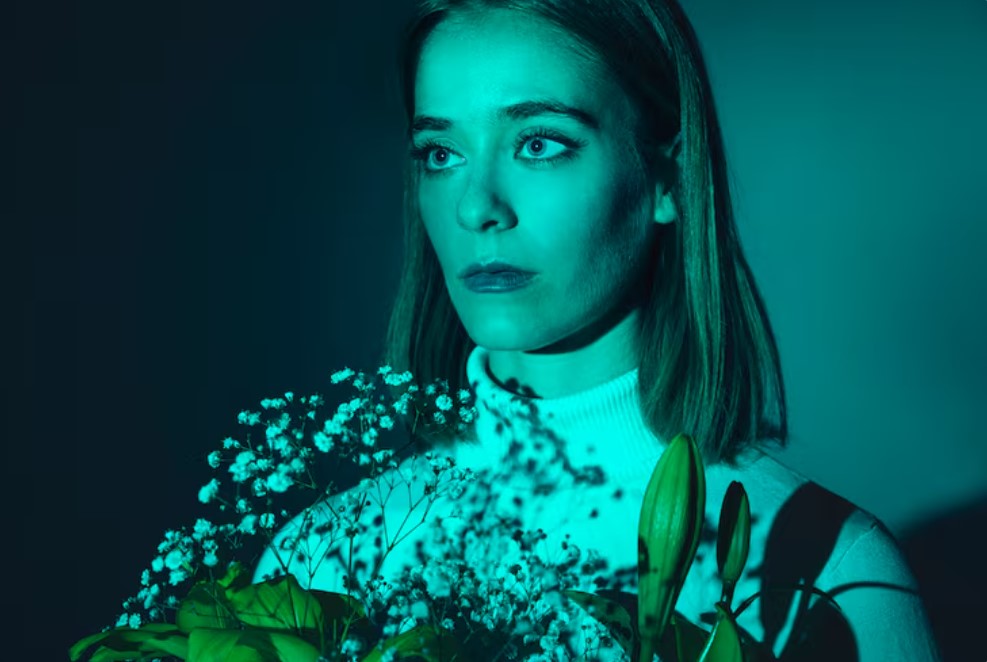Photorealistic portraiture has always balanced craft and ethics. With the rise of modern diffusion models and editing pipelines, it’s now possible to simulate studio-grade imagery without a camera. Yet this power arrives with obligations: accuracy, consent, representation, and transparency. In this guide, a professional workflow is laid out for producing lifelike, non-explicit, respectful portraits of adult women using an AI Nude Generator, while keeping artistry and ethics front and center.
Ethics First: Consent, Context, and Respect
Before prompts are typed or models loaded, intent should be clarified. The most realistic AI portraits mimic the gravity of real portrait sessions, where consent, dignity, and context frame every decision.
- Consent & usage rights. Real people’s images should not be scraped or cloned without explicit permission. If a likeness is commissioned, model releases and scope of use are recommended. When entirely synthetic faces are generated, it should be ensured that prompts do not reconstruct identifiable private individuals.
- No sexualization or nudity. Non-explicit portraiture keeps the focus on character, mood, styling, and story. Clothing, pose, and composition should be designed to avoid objectification.
- Age cues. Prompts must clearly specify “adult” subjects. Terms like “girl” should be avoided; “woman” or “adult woman” is precise and safe.
- Cultural sensitivity. Hairstyles, garments, jewelry, and settings carry meaning. Stereotypes should be avoided; respectful, specific references to culture can be used when appropriate.
An ethical baseline doesn’t stifle creativity; it enables it. When objectives are clear and constraints are chosen, visual quality usually improves.
The Technical Foundation: Models, Samplers, and Resolution
While tools evolve quickly, the building blocks of realistic portrait synthesis tend to remain stable.
- Base model choice. For general photorealism, contemporary diffusion backbones are preferred. Portrait-tuned checkpoints often capture skin micro-detail, lens artifacts, and fashion textures better than generalist weights.
- Samplers and steps. Consistency is aided by a deterministic sampler (e.g., DPM variants) with steps tuned to the model’s sweet spot. Too few steps cause plastic texture; too many can oversmooth freckles and pores.
- Resolution planning. A two-stage approach is common: generate at 512–768 px on the short side, then upscale with a high-quality model to 2–4×. This preserves composition while enabling crisp hair strands, eyelashes, and fabric weave.
- Color management. sRGB should be kept from end to end unless a calibrated pipeline is maintained. What looks rich on a wide-gamut monitor may clip on mobile screens if unmanaged.
Prompt Craft: From Clinical to Cinematic
Prompts for realistic portraits should read like a compact creative brief. It is helpful to structure them in layers.
- Subject & identity cues (always “adult woman”):
“adult woman, late 20s to 30s, confident expression, inclusive skin tone specification if desired, natural makeup” - Styling & wardrobe:
“soft knit sweater, minimal jewelry, natural hair with subtle flyaways” - Lens & lighting:
“85mm portrait lens look, shallow depth of field, f/1.8 bokeh, key light at 45°, softbox, subtle rim light” - Environment & mood:
“window-lit studio, warm neutrals, textured backdrop, calm and candid mood” - Aesthetic guardrails (negative prompts):
“no plastic skin, no warped hands, no extra teeth, no exaggerated makeup, no hyper-sharp oversharpening halos”
Natural language can be used; the model responds well to photography vocabulary. It often helps to avoid stacking dozens of adjectives. Precision beats grocery lists.
Reference-Guided Control: Pose, Hands, and Composition
Even the best prompts can drift. For consistent composition and believable posing, reference-guided control modules are invaluable.
- Pose guidance. A lightweight pose control pass aligns skeletal structure, ensuring shoulders, neck, and hand angles stay human-plausible. Subtlety is the goal; over-constraint can make results stiff.
- Edge or depth guidance. Edge maps or monocular depth can be used to preserve silhouette fidelity when upscaling or re-rendering with style variations.
- Face preservation. When iterating, a face-aware loss or an identity-locking constraint (for a synthetic identity) aids continuity across shots.
Skin Realism: Texture Without Plasticity
Skin is the first giveaway of AI origins when handled poorly. The workflow below helps retain texture:
- Generate with grain. Mild image-space noise should be embraced during generation so micro-contrast isn’t scrubbed away.
- Use gentle face restoration. If a face restorer is used, conservative settings are recommended; aggressive restoration can create “doll” skin.
- Frequency-aware retouching. Post-process with a light hand. Global clarity boosts or heavy denoise tend to erase pores. Aim for the look of a careful portrait retouch, not beauty-ad filter overkill.
- Color separation. A subtle separation between warm skin undertones and cooler ambient shadows reads as cinematic and real. This can be done in grading rather than baked into generation.
Hair, Fabric, and Jewelry: Fine Detail Matters
Convincing realism is often earned in tight crops:
- Hair. Flyaways are good—within reason. It’s better to generate a slightly messy hairline and tidy in retouch than to accept a perfectly helmeted silhouette.
- Fabric. Knit patterns, denim twill, and silk sheen each have characteristic frequency responses. Upscaling models trained on fashion imagery tend to preserve these better.
- Jewelry. Small metallic elements should avoid jagged edges or “melting.” If artifacts appear, a patch replace or very localized inpainting is preferred over global sharpening.
Lighting as Storytelling
Portrait lighting styles can be emulated with short prompts, but intent should be thought like a cinematographer:
- Soft window light for candid authenticity.
- Clamshell beauty light for editorial polish, avoiding glare on oily zones by controlling specular highlights in post.
- Chiaroscuro for moodier character studies, being careful not to crush shadow detail that helps sell depth.
It is helpful to imagine a real set: where the key sits, how fill falls off, and what practical lights are in frame. When light behaves believably, viewers accept the entire image.
Iteration Without Drift: Seeds, Variants, and Batches
Professional outputs rarely come from a single render:
- Seed discipline. A good seed is saved alongside the full prompt and settings. Iterations should vary one parameter at a time.
- Micro-batches. 4–8 image batches provide diversity without losing control. The best are shortlisted for targeted refinements rather than endlessly regening.
- A/B upscales. Competing upscale passes can be done—one detail-oriented, one smoother—and blended selectively during retouch.
Post-Production: The Final 10%
A light, focused retouching pass elevates an already strong render:
- Basic cleanup. Stray artifacts near hairlines, lashes, and collars are removed with a small brush at low hardness.
- Local dodge & burn. Gentle contour shaping is used to preserve natural volume; it should be subtle and anatomically plausible.
- Color grading. A unified palette is chosen per series—warm golds, cool slate, or muted earth tones. LUTs are optional; manual curves keep more control.
- Compression testing. Since most viewers encounter images on mobile, exports at common sizes are tested to ensure banding or haloing doesn’t appear.
Fairness and Representation: Avoiding Hidden Bias
Model priors often reflect imbalances in source data. Active measures are recommended:
- Diverse prompt sets. Skin tones, facial features, and hair textures can be explicitly varied across a project.
- Wardrobe parity. Professional attire, casual looks, and cultural garments should be rotated with equal care.
- Review panel. When possible, peers are asked to flag unintended stereotypes or stylizations.
A more representative portfolio isn’t just ethical; it’s commercially smarter and visually richer.
Transparency and Audience Trust
Even when images are entirely synthetic, honesty builds credibility.
- Label clearly. Captions such as “AI-generated portrait” or an “AI portrait generator” tag reduce confusion without undermining artistry.
- Respect platform policies. Each platform has its own rules for AI content and depictions of people. Non-compliance risks takedowns and reputational damage.
- Avoid identity confusion. If a synthetic subject appears across a campaign, it should be made clear that the person is fictional.
A Sample End-to-End Workflow
- Briefing. Define theme (e.g., “editorial autumn studio portraits”), mood, wardrobe, and lighting style. Clarify adult subject matter, non-explicit boundaries, and cultural notes.
- Prompt development. Draft a concise prompt and a short negative list. Choose a portrait-tuned base model and a deterministic sampler.
- Reference control. If a recurring pose or framing is desired, set light pose/depth guidance.
- Generation. Produce a micro-batch at 640–768 px short side, logging seed and parameters.
- Selection. Shortlist 1–2 frames with natural skin texture and balanced composition.
- Upscale. Run a 2× upscale. If needed, run an alternate upscale for fabric/hair and blend.
- Retouch. Minimal cleanup, local dodge & burn, and cohesive color grade.
- Export. Create platform-specific outputs (print, web, social). Test compression.
- Metadata. Store prompt, seed, and settings. Label as AI-generated.
Where This Is Headed
The next wave of portrait systems will be more controllable, less biased, and easier to audit. Expect better hand/ear rendering, richer fabric simulation, and improved relighting. Guardrails will strengthen—content filters will continue to discourage explicit or exploitative depictions, and attribution tools will spread. Skill will shift further toward direction: taste in styling, sensitivity to cultural context, and the ability to tell a story with light.
Bottom line: With a clear ethical framework, disciplined prompting, and a light but expert post-process, non-explicit, respectful AI portraits of adult women can be produced that feel authentic and professional. An AI portrait generator should be treated not as a shortcut, but as a studio: one where consent, representation, and craft remain non-negotiable.



